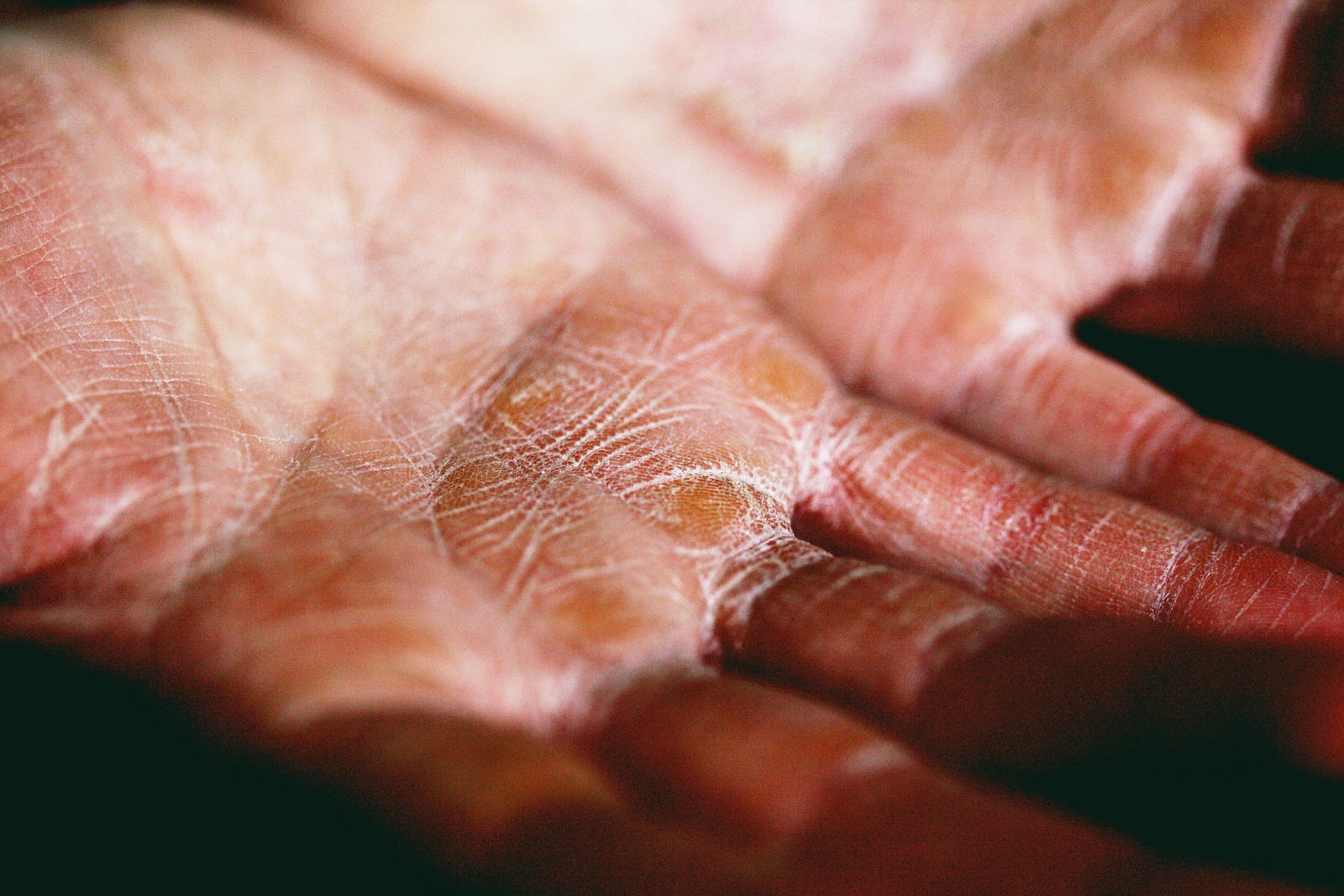“NEW YORK CITY’S AIR POLLUTION IS AMONG THE WORLD’S worst as Canada wildfire smoke shrouds Northeast.” That is the title of a recent CNN article. Today, we explore two odd symptoms associated with exposure to poor air pollution: Wrinkles & sleep troubles.
The New York City photos appear cinematic; my mind saw the dull vanilla sky and reminisced about the film Blade Runner. I spy Manhattanites donning masks that they had recently ditched following the wane of the COVID-19 pandemic.
The particulate matter hit around 195 micrograms, more than five times above the national air quality standard.
Last year, I experienced itchy eyes, a scratchy throat, and an occasional mild cough. Why? The Seattle air was thick with wildfire smoke. Have you experienced issues related to poor-quality air?
But did you know it is common to have headaches, chest pain, and dizziness? According to Dr. Gregory Wu, a critical care medicine doctor at Albany Medica Center (USA), poor air quality can contribute to these less-expected symptoms. Chest pain means that you should seek medical care.
No matter the natural disaster I’ve covered, whether wildfire or flood, I always come back with a much greater perspective. — Ginger Zee
Record Wildfire Air Pollution Ravages the USA
This week, people in the United States are breathing in the most toxic air pollution from wildfire smoke in recent history.
Those in New York City had exposure to pollution levels over five times above the national air quality standard. Smoke wafting south from Canadian forest fires caused Americans to suffer the worst day of average exposure to such pollution since a dataset on smoky conditions started in 2006.
Canada’s wildfires are a harbinger of our climate future, experts explain.

The fires are a “really clear sign of climate change,” according to Mohammadreza Alizadeh, a researcher at McGill University (Canada)), who is also a postdoctoral associate at the Massachusetts Institute of Technology (USA).
Measuring small particulate matter (PM)
Measuring small particulate matter (PM) is crucial for assessing air quality and understanding its potential impact on human health and the environment.
Various methods and instruments, including those designed for specific size ranges, measure PM. Here are some common subheadings or categories used in the measurement of small particulate matter:
- PM2.5: PM2.5 refers to particulate matter with a diameter of 2.5 micrometers or smaller. This category includes fine particles that can be inhaled deep into the lungs and significantly impact respiratory health. PM2.5 is commonly measured using instruments such as beta attenuation monitors (BAM), tapered element oscillating microbalances (TEOM), and optical particle counters (OPC).
- PM10: PM10 refers to particulate matter with a diameter of 10 micrometers or smaller. This category includes both PM2.5 and larger particles. PM10 measurements provide an overall assessment of coarse particles in the air, including dust and pollen. Scientists often use instruments such as high-volume and dichotomous samplers to measure PM10 concentrations.
- Ultrafine particles: Ultrafine particles are particles with a diameter smaller than 0.1 micrometers. These particles, such as vehicle emissions or industrial activities, are typically generated by combustion. Measuring ultrafine particles requires specialized instruments like condensation particle counters (CPC) or scanning mobility particle sizers (SMPS).
- Black carbon: Black carbon refers to fine particles primarily composed of carbonaceous material released during incomplete combustion processes, such as fossil fuel burning. Black carbon particles are often associated with emissions from diesel engines and biomass burning. Researchers often measure black carbon concentrations using tools such as aethalometers and photoacoustic spectrometers to measure black carbon concentrations.
- Particle number concentration: Besides measuring particulate matter’s mass concentration, particle number concentration (PNC) provides information about the total number of particles in a given air volume. PNC measurements are crucial for understanding the abundance and size distribution of particles. Instruments like condensation particle counters (CPC) or optical particle counters (OPC) are commonly used for PNC measurements.
Different measurement techniques and instruments may have varying accuracy, sensitivity, and suitability levels for specific applications. Additionally, air quality monitoring agencies and researchers often follow established protocols and standards to ensure consistency and comparability of measurement data.
Less Recognized Symptoms of Poor Air Quality
A 2020 Journal of the American Heart Association article reported this disturbing statistic:
Exposure to heavy smoke during wildfires raised the risk of out-of-hospital cardiac arrests by up to 70 percent.

Pollutants such as carbon monoxide can cause headaches or dizziness. Occasionally, an individual may experience nausea or pass out from toxic fume inhalation.
Air Pollution and Sleep
Sleep can also be thrown off because of exposure to wildfire smoke, according to Galiatsatos. That fine particulate matter, he said, can enter the bloodstream, causing inflammation in and around the brain as well as other parts of the body, making it difficult to get rest.
A warm bedroom, air pollution, and high carbon dioxide levels can adversely affect your ability to sleep well. That’s according to a new study from the University of Pennsylvania and the University of Louisville (USA).
Publishing in Sleep Health, the researchers are among the first to measure several environmental variables in the bedroom and analyze their relationships to sleep efficiency.
The scientists recruited subjects from the National Institutes of Health-funded Green Heart Project, which investigates the effects of planting 8,000 mature trees on the cardiovascular health of Louisville residents.
Tracking 62 volunteers, the study authors found the following higher levels of the following to be independently linked with lower sleep efficiency:
- Air pollution (particulate matter less than 2.5 micrometers or PM2.5)
- Carbon dioxide
- Noise
- Temperature
Study Findings
For each environmental variable, the researchers compared sleep efficiency during exposures to the highest 20 percent of levels versus the lowest 20 percent. Here are the results in graphic form:

Two other sleep environment variables — relative humidity and barometric pressure — were not objectively associated with sleep efficiency.
Interestingly, only bedroom humidity was linked to subjects’ sleep outcomes on questionnaires. Higher humidity was associated with lower self-reported sleep quality and more daytime sleepiness.
Interestingly, only bedroom humidity was linked to subjects’ sleep outcomes on questionnaires. Higher humidity was associated with lower self-reported sleep quality and more daytime sleepiness.
This finding suggests that studies based on questionnaires may miss associations better detected by objective sleep measures. Finally, most research subjects rated bedroom temperature, humidity, and noise levels as “just right,” regardless of exposure levels.
We subjectively habituate to our environment, a study author observes.
The study reminds us of the importance of the bedroom environment to get high-quality sleep.
Wrinkles Too? Air Pollution Has Many Consequences
University of California, San Francisco (USA) skin doctor Maria Wei, MD, informs us that wildfire smoke can cause skin problems. In her 2021 JAMA Dermatology study, she and her colleagues reported this observation:
Wildfire smoke can cause skin disorder flare-ups, including psoriasis and eczema. This phenomenon can also occur in individuals without a prior diagnosis.
The flare-ups might not happen immediately. Symptoms can sometimes emerge a month or so after poor air exposure. Look for itchy skin, acne, and hand or face rashes. Wei adds that air pollution is also linked to premature skin aging.

Dr. Wei speculates that while particulate matter from smoke can penetrate the skin, there may also be an overactive immune response to the pollution, resulting in flares of skin issues.
Coping With Wildfire Air Pollution: 9 Tips
Dealing with wildfire air pollution requires a combination of preventive measures and actions to minimize exposure. Here are some steps you can take to cope with wildfire air pollution:
- Stay informed: Keep track of local air quality reports and stay updated on the status of wildfires in your area. Pay attention to official announcements and advisories from local authorities or health departments.
- Create a clean indoor environment: Keep your indoor air as clean as possible by closing windows and doors to prevent outdoor smoke from entering your home. Use air purifiers with high-efficiency particulate air (HEPA) filters to remove fine particles from the air inside your home.
- Limit outdoor activities: Avoid spending prolonged time outdoors, especially during peak pollution. If you need to be outside, schedule activities for when air quality is better, such as early morning or late evening. Please consider wearing a tight-fitting mask, like an N95 respirator.
- Use protective masks: When the air quality is significantly compromised, consider using a mask rated N95 or N99 to filter out harmful particles. These masks can reduce exposure to smoke particles but ensure they fit properly and are worn consistently.
- Maintain good indoor air circulation: If the air quality outside is relatively better, you can open windows and doors briefly to allow fresh air to circulate. However, close them promptly if you notice a decline in air quality.
More Tips
- Limit indoor pollution sources: Minimize indoor activities that generate additional pollutants, such as smoking, using candles, or burning other materials. Avoid using products that release chemicals into the air, including certain cleaning agents and aerosol sprays.
- Stay hydrated and maintain a healthy lifestyle: Drink plenty of water to help your body flush out toxins. Follow a balanced diet rich in fruits and vegetables to boost your immune system. Engage in regular physical activity to keep your respiratory system strong.
- Seek medical advice if necessary: If you or someone in your family experiences severe symptoms like difficulty breathing, chest pain, or persistent coughing, seek medical attention promptly. Certain individuals, such as those with pre-existing respiratory conditions or older adults, may be more susceptible to the effects of air pollution.
- Wearing long sleeves and pants and moisturizers can also act as barriers for the skin.
- Leave your bedroom door ajar to lower carbon dioxide levels. I have multipaned windows to reduce noise levels.
Remember, these measures focus on minimizing exposure to wildfire smoke and reducing its impact on your health. It’s essential to prioritize your safety and well-being during periods of poor air quality.
Fortunately, Seattle has not seen air pollution from regional and Canadian wildfires. But summer is coming.
Key points — Air Pollution & Wrinkles
Question. What are some underappreciated side effects of exposure to air pollution?
Findings. Exposure to poor air can result in itchy eyes, a scratchy throat, and an occasional mild cough. Moreover, you may experience many other problems, ranging from chest pain to poor sleep (and even skin problems).
Meaning. Please prioritize your safety and well-being during times of poor air quality.
The information I provided in this blog is for educational purposes only and does not substitute for professional medical advice. Please consult a medical professional or healthcare provider for medical advice, diagnoses, or treatment. I am not liable for risks or issues associated with using or acting upon the information in this blog.
Thank you for reading “Air Pollution & Wrinkles.”



